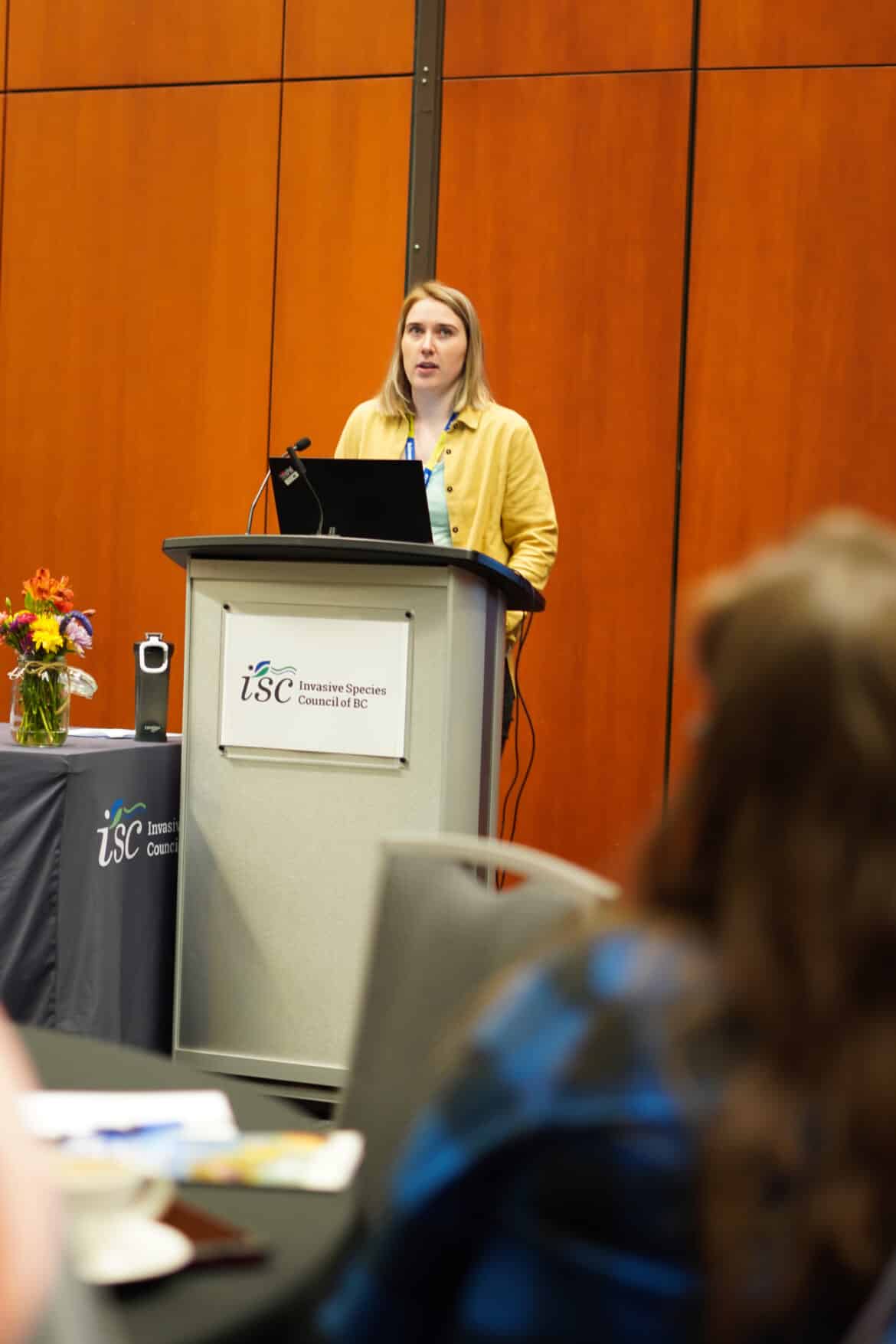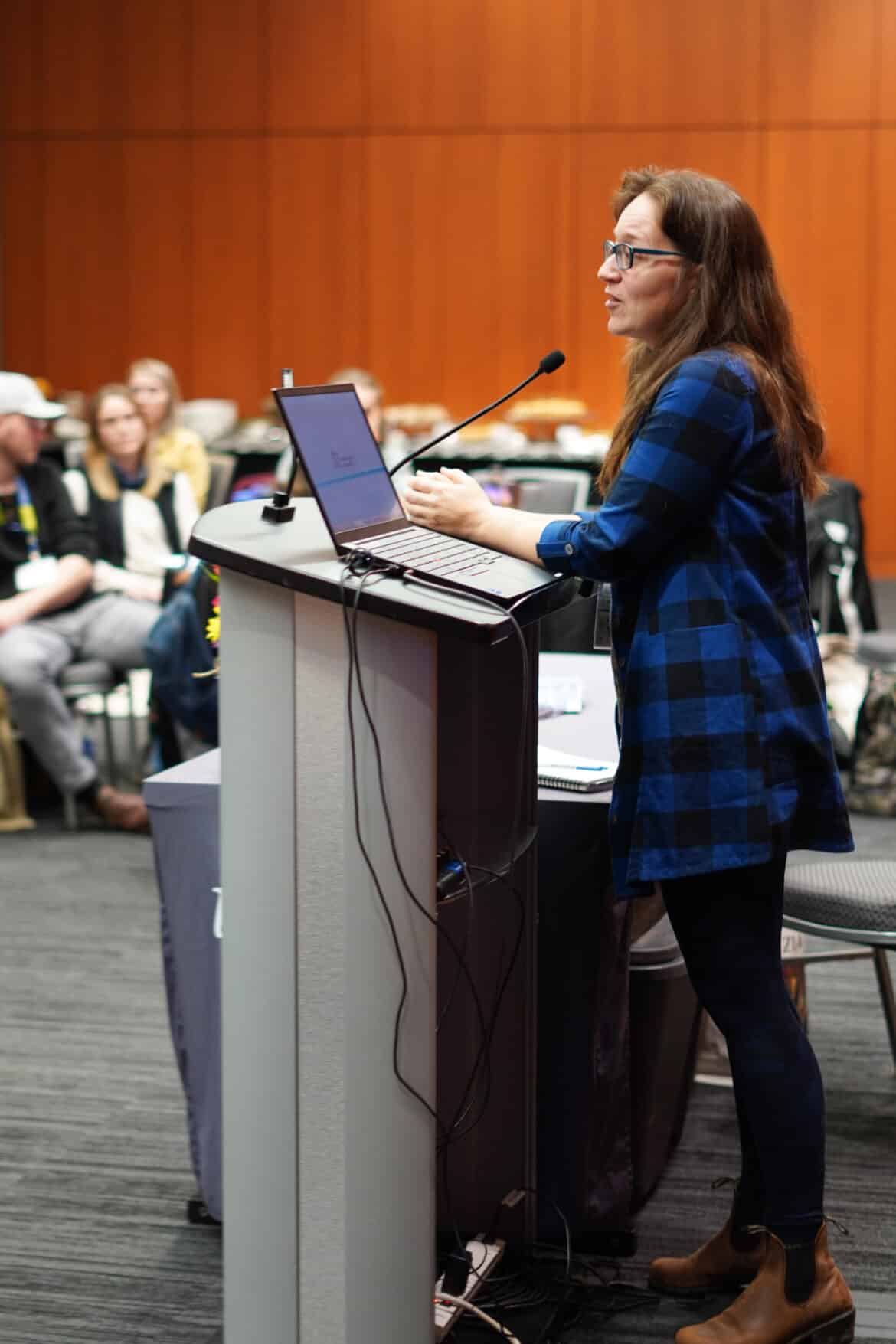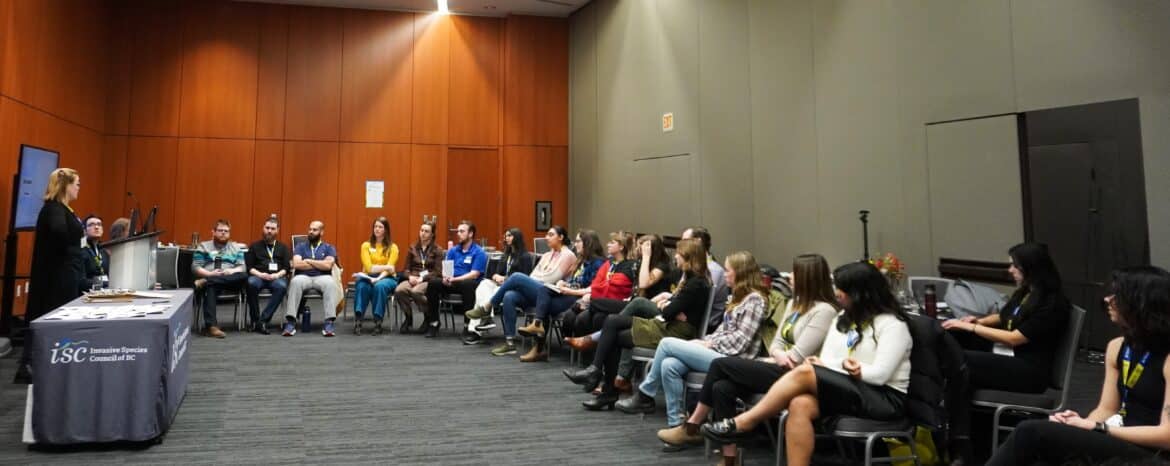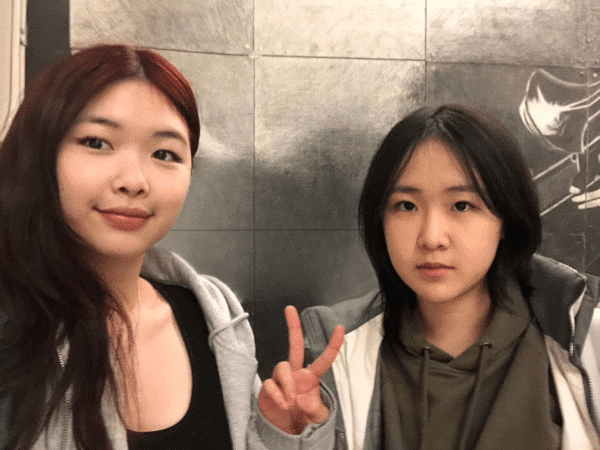By Julia Fracassi | March 19, 2024
What makes a Youth Eco Leader? How can we elevate and support the voices of youth concerned for our environment? On February 26th, youth from across Canada were invited to the Anvil Centre in New Westminster, B.C. to attend a day-long Youth Eco Leader workshop. They engaged with a diverse range of speakers to answer these questions.
What better way to start the workshop than a presentation from an inspiring youth participant. Hunter Jarratt (known as @invasivespeciesguy on Instagram), shared his experience leading an ecological restoration project currently taking place in the Nanaimo-Ladysmith area. Hunter, along with the team at Kiki Nursery, aims to restore a Garry oak ecosystem that was converted into agricultural land. According to the Garry Oak Ecosystems Recovery Team—an organization dedicated to the recovery of Garry oak and associated ecosystems in Canada—these ecosystems are one of the most endangered in Canada. Less than 5% remain in their near-natural condition. Hunter is a youth who leads by example, using social media to educate others and share his restoration work.
Jenna Merth from the Freshwater Fisheries Society of BC provided an overview of aquatic stewardship efforts promoting safe and responsible recreation habits. She demonstrated that a Youth Eco Leader could be someone who devotes their efforts to public education and community outreach. Kephra Beckett and Angela Hansen from BC Nature motivated youth by sharing their journeys into environmental conservation, the challenges they have overcome in their careers, and the diverse paths that can lead to meaningful work. Illustrating their career paths and the focus of their work offered valuable insights for youth invested in developing their own careers in conservation.


Using art to inspire environmental change and benefit nature is another way to be a Youth Eco Leader. Fernando Lessa presented on protecting nature through photography. Fernando is a nature image-maker based in North Vancouver whose passion for the underwater world is contagious. His images give a rare glimpse of salmonids found in urban environments. With every photo, Fernando shared a different story of how his work as a photographer has brought him closer to nature. Following his presentation, Fernando prompted an engaging discussion around the ethics of sharing photos of “hidden” gems in nature.
Emma Wiebe and Marlee Verleih from the Columbia Shuswap Invasive Species Society showed participants the ancient technique of Tatakizome, making art from invasive plants found in nature. Tatakizome, also known as “flower pounding,” is an ancient Japanese process of transferring the natural dyes from flowers and leaves onto fabric and papers through hammering. Invasive plants are pervasive and can be extremely difficult to manage, but providing a space where we could turn them into something beautiful was an eye-opening moment for those present.


The day concluded with a roundtable discussion led by Rebecca Lord, Chris Sullivan, and Julien Roberston from the Canadian Council on Invasive Species. The session, entitled “Where to Next?” was an opportunity to gather input on what youth-led stewardship can look like and how it can inform future program offerings. The discussion centered around ideas for better integrating youth into decision-making processes ensuring their voices play a role in shaping their futures. Providing a space for youth to feel seen and heard is a crucial component of empowering youth leaders.

“I found the opportunity to hear perspectives outside of our own communities to be quite valuable… I found it to be quite empowering. I’m now part of a network of like-minded individuals who are all willing to support one another in future endeavours.” Trevor – Micro-grant Participant and Workshop Attendee
The Youth Eco Leader workshop was a chance for youth participants to connect with like-minded individuals, learn about different opportunities for habitat stewardship, and imagine the possibilities their futures hold. By the end of the day, there was a feeling of hope, knowing there are youth all over Canada passionate about shaping a better future. A sense of excitement followed, as participants would then attend their first annual ISCBC Invasives Forum. The two-day conference was a fantastic way for them to connect with the invasive species community, attending presentations and networking with professionals in the field. We hope participants returned home feeling revitalized and excited about continuing their work as Youth Eco Leaders.
Julia is a Communications Coordinator at ISCBC. She is passionate about knowledge mobilization and getting people excited about conservation. When she is not on the ski hill, Julia loves to paddleboard, hike, and explore all the amazing, diverse natural spaces Canada has to offer. You can reach Julia at jfracassi@bcinvasives.ca.
Share





